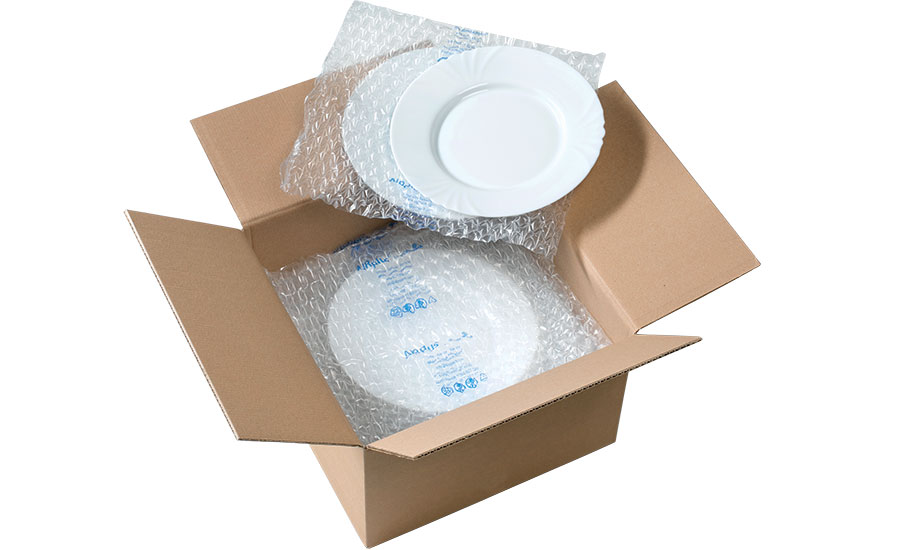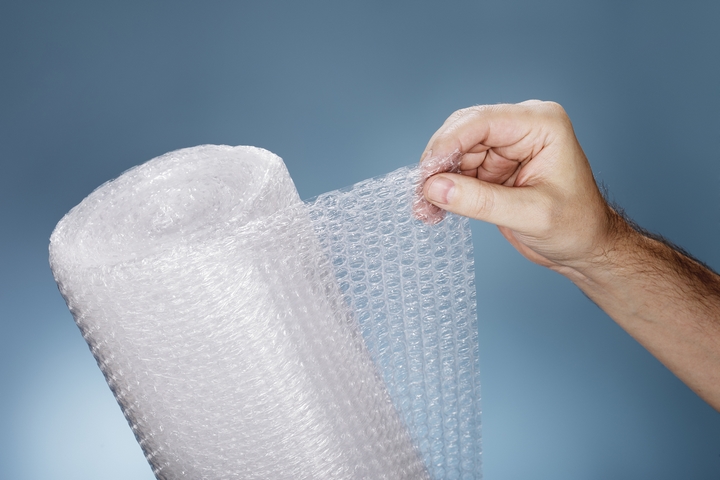Introduction
Bubble wrap is a bubble-like, flexible plastic material invented by two Americans. Since bubble wrap was invented in 1960, it’s been one of the top choices for shipping materials worldwide. It was originally used as greenhouse insulation and was later introduced in bubble wrap packaging.
The three layers of bubble wrap are an outer pair that protects the object being shipped, a middle layer with Micro perforation technology which creates small air bubbles to help improve flexibility and durability. The majority-made up material can be cut down into any shape or size for custom fitting around whatever you’re shipping.
How does bubble wrap work?
When one tries to use bubble wrap, they puncture the bubble membrane using their nails or fingers and then feel a popping sensation as thousands of little bubbles burst in their fingertips.
This so-called popping feeling allows people to easily determine where they have already used bubble sheets left without having to readjust them back onto the roll for later usage. This concept of multiple bubble bursts in just one tiny package can be easily found in bubble-wrapped water balloons.
The plastic bubble membrane is the most important bubble wrap component and can be produced in a variety of sizes, thicknesses, and colors. It is an amorphous polymer due to its cross-linked structure [4]. The bubble film has three layers: two outer layers which are transparent low-density polyethylene (LDPE) to protect the inner bubble generating layer that should be punctured by a sharp object such as a nail or pin.
Bubble wrap is a versatile packaging material that can be used for many purposes. Its most commonly known use would probably involve shipping and storing items. Bubble wrap is made with low-density polyethylene resin that allows the bubbles to remain inflated with compressed air for up to three weeks, depending on the environment they are in. The bubble wrap can either be clear or opaque (for greater strength). A typical bubble has a diameter of 0.04 inches. Storage life depends on how much air is retained inside.
Bubble wrap is used to protect fragile items and objects that are being stored or sent through the postal system. The insulation on each side of an item, depending on its shape can be 30-40 cm thick with an average width spanning 90 mm at the widest point (including edges). This protective packaging will then go into another cardboard box making sure it arrives safely.
– bubble wrap packaging is the best way to pack a product that can be breakable, sensitive, or fragile in nature
– bubble wrap also keeps the product safe from breaking, cratered, and damage by using bubble-wrap inside other types of packaging we cannot possibly keep our product safe.
– The best way to ensure your gift arrives safely is by using bubble wrap! It will protect it during shipping and once the recipient receives their package, they’ll find everything in perfect condition.

Why bubble wrap is not recycled?
Bubble wrap is made from plastic. Due to the nature of bubble wrap, it cannot be recycled, because recycling requires that the materials used are able to be melted down and reformed into new products. Recycling bubble film would be difficult because of the bubble shape which is needed for its bubble wrap form, this means that meltdown would not occur at an efficient rate making the bubble bumping ineffective for use again.
How it can be reused?
Although bubble packaging does not have any reusability in itself, it can hold other items such as clothes and bottles together when necessary, therefore resulting in further waste like bags and straws
Bubble wrap material consists of mostly plastic and can be easily reused, but its machines use large amounts of electricity to produce bubble wrap material making it an unsustainable source of packaging material. Once a bubble has burst it cannot be the same as a new bubble so there is no point in recycling bubble wrap. Even if people could recycle bubble wraps, The problem with bubble wraps is that they’re not always made into something else, like shopping bags or other plastic items, because bubble wraps are usually used for packing fragile objects that break easily.

Some interesting facts about bubble wrap packaging
Bubble wrap is a pliable transparent plastic material made up of very small bubbles that form on the inside surfaces of two semi-opaque bubble sheets.
People use bubble wrap packaging for different purposes, mainly to protect their breakables and fragile items during shipment in order to prevent them from being damaged but there are other very interesting facts about it that people do not know. Some of those facts are listed below:
Facts about bubble wrap 1: The invention of bubble wrap packaging
The bubble wrap was invented by two engineers in 1957 named Al Fielding and Swiss engineer Marc Chavannes. They were trying to create an air-filled cushion for IBM after they had problems with their noisy computer printer and wanted a way to let them know when a product is broken. They then came up with bubble wrap and also bubble wrap printing machines which made bubble wrap a very common thing in most people’s lives today.
Facts about bubble wrap 2: Bubble Wrap packaging became popular after the invention of the computer
Bubble wrap is very effective in protecting items that are breakable or fragile, so in the 1960s bubble wrap was tough to find because they were mostly used for packing electronic products such as fragile computer parts like glass tubes. Once computers have been invented, bubble wraps become more popular since consumers start finding uses for this product and its presence can be seen at almost every store.
Facts about bubble wrap 3: The most interesting bubble wrap statistic
Bubble wrap is very popular because of its bubble-popping fun. One bubble wrap statistic states that bubble wrap has more than 3,000 bubbles per square meter and a bubble pops every 0.2 seconds when someone squeezes it. This adds up to about 190 billion bubbles in just one big roll of the bubble wrap! That was definitely an astonishing number and an interesting fact about bubble wrap.
Facts about bubble wrap 4: The Bubble Wrap Appreciation Day
One day every year is set aside by many people to appreciate bubble wraps which is called the Bubble Wrap Appreciation Day which is on January 25th of every year. On this special day, people all over the world are encouraged to pop as many bubble wraps as they can and share bubble wrap popping videos on social media.
Facts about bubble wrap 5: The longest bubble that was ever popped
The record of the longest bubble to be popped is one that has been kept in a museum which had a length of 38 inches or 96 cm. A woman named Lisa Ryder broke this record by popping an incredible bubble wrap measuring 2.5 meters long or about 98 inches! This bubble may hold the Guinness World Record but many disagree because it has never appeared in any official books from Guinness World Records.
Facts about bubble wrap 6: Bubble Wrap Art
Bubble wraps have many more creative uses than just protecting your items. Bubble wrap art is one form of expression created by artists who use them to create paintings and sculptures with their individual bubble-shaped pieces stuck onto the end of paintbrushes or pens before pressing them against papers they can leave an imprint on them.
Facts about bubble wrap 7: Where does bubble wrap come from?
Bubble wraps are usually made up of two layers of the plastic film; one is colored and the other one is semi-transparent. The plastic films are sealed together at their edges by a hot roller so there are no air bubbles inside the bubble wraps when packaged for sale. One common type of bubble wrap material is polyethylene, which comes from oil, natural gas, coal, or even trees.
Facts about bubble wrap 8: Bubble Wrap Blowing Machine
Bubble wrap is a great source of entertainment for some people, especially those who enjoy popping the bubbles and listening to that satisfying sound. One fun fact about bubble wraps is they can be blown up three feet tall! Of course, this only happens when someone uses a special bubble wrap-blowing machine because squeezing bubble wraps may cause them to break.
Conclusion
Bubble wrap is a pliable transparent plastic material used to cushion items during shipping. It works by allowing a small amount of air to remain in the package, thus preventing objects from knocking into each other and causing damage. It is a pliable transparent plastic material that forms bubbles when wrapped around an object, usually for protection during shipping. When the bubble-wrapped items are then released, the bubble wrap bursts and creates a popping sound. It is also used in daily life to stop breakable objects from breaking during handling or moving.
